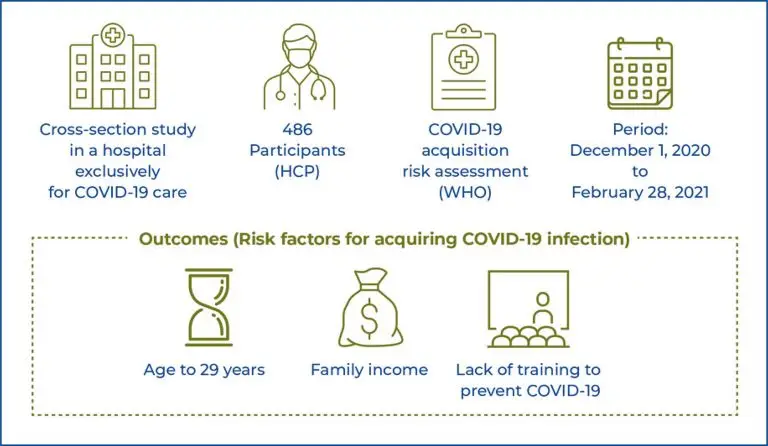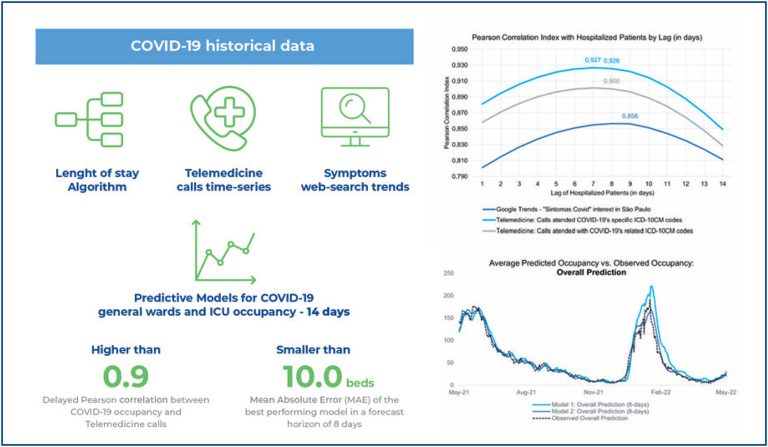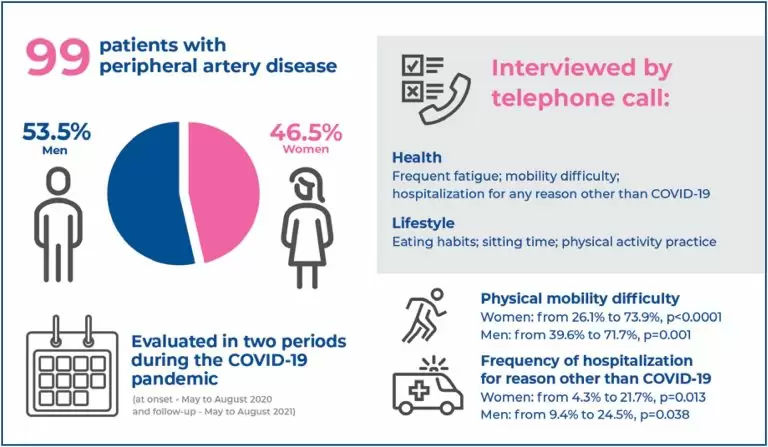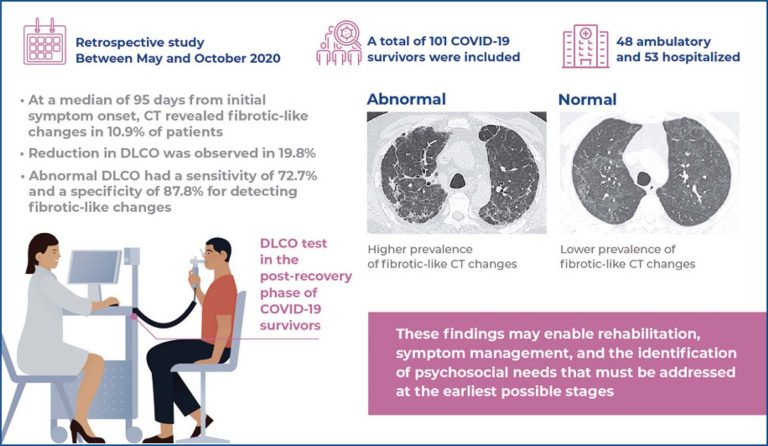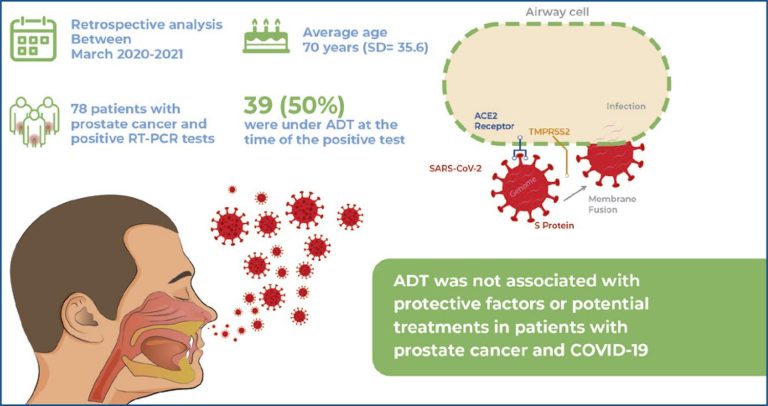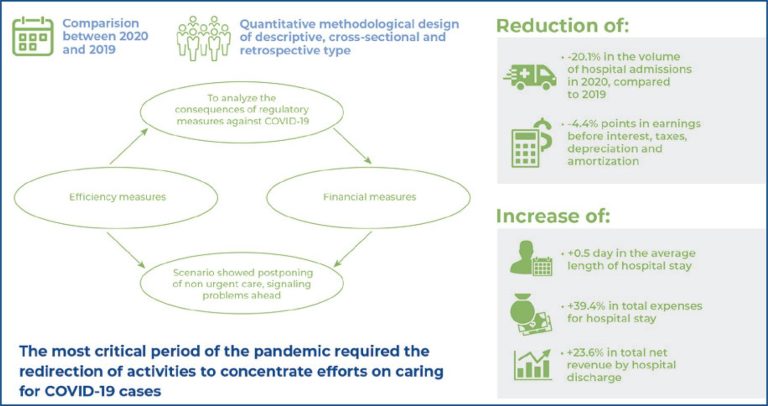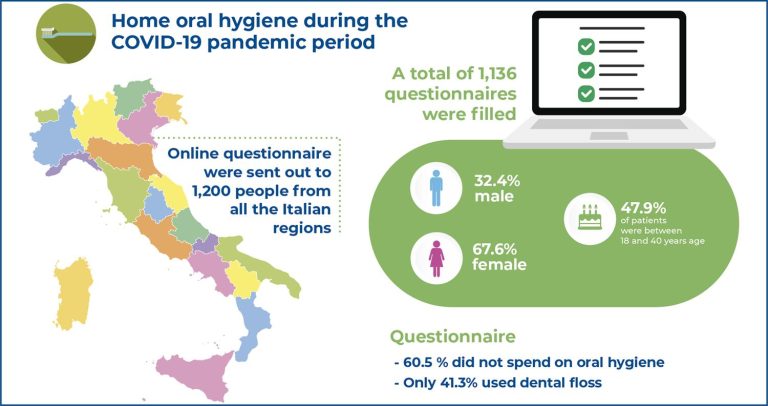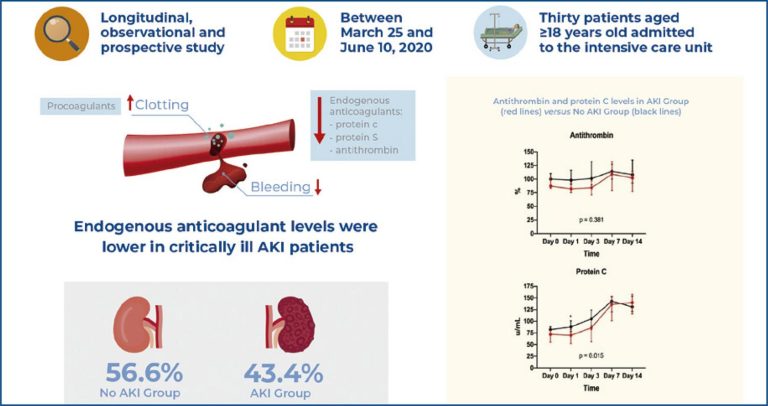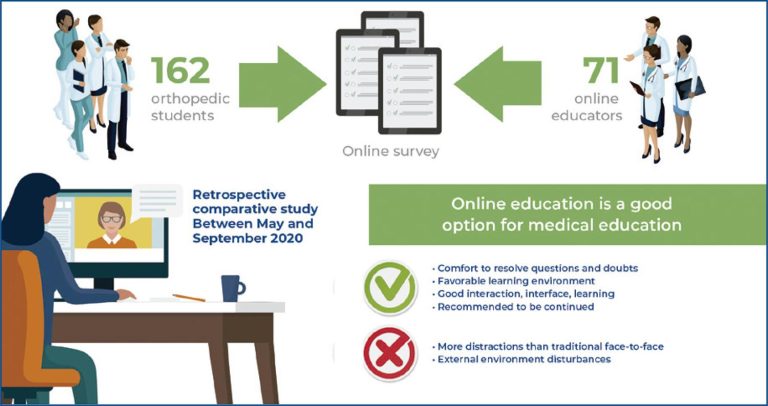20/May/2024
Factors underlying the high occupational risk of healthcare personnel for COVID-19 infection
DOI: 10.31744/einstein_journal/2024AO0433
Highlights COVID-19 infection among healthcare personnel has impacted the workforce in hospitals. Knowledge of the risk factors for COVID-19 infection is important for disease prevention measures. Failure to train healthcare personnel is an important risk factor for acquiring COVID-19. ABSTRACT Objective: To verify the rate of COVID-19 infection among healthcare personnel at high and low risk of COVID-19 infection and identify the underlying risk factors. Methods: This crosssectional study was conducted between December 1, 2020 and February 28, 2021. Associations […]
Keywords: Coronavirus infections; COVID-19; Health personnel; Occupational Risks; SARS-CoV-2; Transmission
20/May/2024
Lessons from the pandemic and the value of a structured system of ultrasonographic findings in the diagnosis of COVID-19 pulmonary manifestations
einstein (São Paulo). 20/May/2024;22:eAE0780.
View Article20/May/2024
Lessons from the pandemic and the value of a structured system of ultrasonographic findings in the diagnosis of COVID-19 pulmonary manifestations
DOI: 10.31744/einstein_journal/2024AE0780
Highlights Lung ultrasound enables precise diagnosis and ongoing monitoring of the disease. Ultrasound is an effective tool for assessing pulmonary findings in COVID-19. Structured reports enhance communication and are easily reproducible. ABSTRACT Objective: We aimed to share our experience in implementing a structured system for COVID-19 lung findings, elucidating key aspects of the lung ultrasound score to facilitate its standardized clinical use beyond the pandemic scenario. Methods: Using a scoring system to classify the extent of lung involvement, we retrospectively […]
Keywords: Clinical decision-making; Coronavirus infections; COVID-19; Lung disease; Organ dysfunction; SARS-CoV-2; Ultrasonography
26/Feb/2024
Is it possible to estimate the number of patients with COVID-19 admitted to intensive care units and general wards using clinical and telemedicine data?
einstein (São Paulo). 26/Feb/2024;22:eAO0328.
View Article26/Feb/2024
Is it possible to estimate the number of patients with COVID-19 admitted to intensive care units and general wards using clinical and telemedicine data?
DOI: 10.31744/einstein_journal/2024AO0328
Highlights Developed models to forecast bed occupancy for up to 14 days and monitored errors for 365 days. Telemedicine calls from COVID-19 patients correlated withthe number of patients hospitalized in the next 8 days. ABSTRACT Objective: To develop and validate predictive models to estimate the number of COVID-19 patients hospitalized in the intensive care units and general wards of a private not-for-profit hospital in São Paulo, Brazil. Methods: Two main models were developed. The first model calculated hospital occupation as […]
Keywords: Big data; Coronavirus infections; COVID-19; Decision support systems, clinical; Forecasting; Pandemics; Resource allocation; Telemedicine
22/Feb/2024
Health and lifestyle parameters in peripheral artery disease at two periods of the COVID-19 pandemic: comparison between men and women
einstein (São Paulo). 22/Feb/2024;22:eAO0345.
View Article22/Feb/2024
Health and lifestyle parameters in peripheral artery disease at two periods of the COVID-19 pandemic: comparison between men and women
DOI: 10.31744/einstein_journal/2024AO0345
Highlights Sitting time increased in 73.9% of women and 84.9% of men at the onset of the pandemic. Physical activity was practiced by 23.9% of women and 39.6% of men at the onset of the pandemic. The prevalence of both women and men reporting physical mobility difficulties increased at follow-up. Hospitalization rates for reasons unrelated to COVID-19 have increased in both women and men. ABSTRACT Objective: This study analyzed the impact of sex on self-reported health and lifestyle parameters in […]
Keywords: Coronavirus infections; COVID-19; Exercise; Intermittent claudication; Life style; Mental Health; Pandemics; Peripheral arterial disease; Sex characteristics; Social isolation
15/Dec/2023
Correlation between chest computed tomography findings and pulmonary function test results in the post-recovery phase of COVID-19
einstein (São Paulo). 15/Dec/2023;21:eAO0288.
View Article15/Dec/2023
Correlation between chest computed tomography findings and pulmonary function test results in the post-recovery phase of COVID-19
DOI: 10.31744/einstein_journal/2023AO0288
Highlights Computed tomography revealed fibrotic-like lung changes in 10.9% of patients. Higher computed tomography scores were associated with a reduced DLCO (median computed tomography score, 6 versus 3; p=0.016). Fibrotic-like computed tomography changes were more prevalent in patients with DLCO impairment (p<0.001). Reduced DLCO had sensitivity and specificity of 73% and 88%, respectively, for predicting fibrotic-like computed tomography changes. ABSTRACT Objective: The radiological and functional lung sequelae in COVID-19 survivors remain unclear. We compared the chest computed tomography findings of […]
Keywords: Carbon monoxide; Coronavirus infections; COVID-19; Pulmonar fibrosis; Pulmonary diffusing capacity; Respiratory function tests; SARS-CoV-2; Tomography, x-ray computed
11/Oct/2023
Epidemiological profile of COVID-19 in patients with prostate cancer undergoing androgen deprivation therapy at a Brazilian Cancer Center
einstein (São Paulo). 11/Oct/2023;21:eAO0273.
View Article11/Oct/2023
Epidemiological profile of COVID-19 in patients with prostate cancer undergoing androgen deprivation therapy at a Brazilian Cancer Center
DOI: 10.31744/einstein_journal/2023AO0273
Highlights We were unable to prove an association between the use of androgen deprivation therapy and a reduction in factors associated with worse clinical outcomes. Most of the data presented show a tendency to favor the outcomes of patients who do not undergo androgen deprivation therapy, which can be explained by the fact that, in general, their clinical conditions are better and their performance status scores are lower than those of patients who undergo androgen deprivation therapy. ABSTRACT Objective: To […]
Keywords: Androgens; Antineoplastic agents; Coronavirus infections; COVID-19; hormonal; Prostatic neoplasms; SARS-CoV-2
11/Oct/2023
Impacts of the COVID-19 pandemic on private hospitals in Brazil
DOI: 10.31744/einstein_journal/2023AO0174
Highlights Sanitary restriction measures had a strong impact on usual performance indicators from a selected group of private hospitals in Brazil. Pregnancies and deliveries continued to constitute an important proportion of hospital admissions because they did not depend on external restrictions. Hospital costs increased due to increased utilization of more expensive Personal Protection Equipment (due to lack of availability or much higher demand). ABSTRACT Objective: To analyze the operational and/or financial impacts of regulatory measures implemented by the National Agency […]
Keywords: Brazil; Brazilian Health Surveillance Agency; Coronavirus infections; Cost of illness; COVID-19; Health care costs; Hospitals; Pandemics; private
15/Sep/2023
Epidemiological evaluation of patient compliance regarding oral health and hygiene during the COVID-19 period
DOI: 10.31744/einstein_journal/2023AO0195
Highlights Dental and tongue hygiene are key to maintaining systemic health. The questionnaire was sent by e-mail to 1,136 male and female patients throughout Italy. Demonstrate and understand whether patients during the pandemic cleaned and spent time cleaning and maintaining their teeth and tongue hygiene. The questionnaire testifies to the fact that it is not the time but the patient’s compliance and motivation that makes the difference. INTRODUCTION Oral hygiene techniques must be performed not only to maintain oral […]
Keywords: Coronavirus infections; COVID-19; Epidemiologic studies; Oral health; Oral hygiene; Patient compliance; Surveys and questionnaires
30/Aug/2023
COVID-19-associated coagulopathy and acute kidney injury in critically ill patients
DOI: 10.31744/einstein_journal/2023AO0119
Highlights 43.4% of the cohort developed acute kidney injury. D-dimer and fibrinogen levels were high in both groups. Rotational thromboelastometry data were similar between groups. Serum levels of antithrombin activity and protein C were lower in patients who developed acute kidney injury. Objective The incidence of thrombotic events and acute kidney injury is high in critically ill patients with COVID-19. We aimed to evaluate and compare the coagulation profiles of patients with COVID-19 developing acute kidney injury versus those who […]
Keywords: Acute kidney injury; Blood coagulation; Coronavirus infections; COVID-19; Intensive care units; SARS-CoV-2; Thrombosis
25/Jul/2023
Changes in the methodology of medical teaching due to the COVID-19 pandemic
DOI: 10.31744/einstein_journal/2023AO0101
Highlights Teaching method preferences of medical students 162 and teachers 71 were evaluated. Both groups showed high satisfaction and a sense of learning in virtual classes. The virtual method resulted in worse retention of attention. The virtual method also showed higher interference from the external environment. ABSTRACT Objective To evaluate the perceptions of students and teachers regarding remote teaching modality in comparison with the traditional face-to-face method. Methods In this observational, retrospective, comparative, single-center study, questionnaires containing three major […]
Keywords: COVID-19; Education, distance; Education, medical; Learning; Motivation; Pandemics; School teachers; Students; Surveys and questionnaires; Teaching


